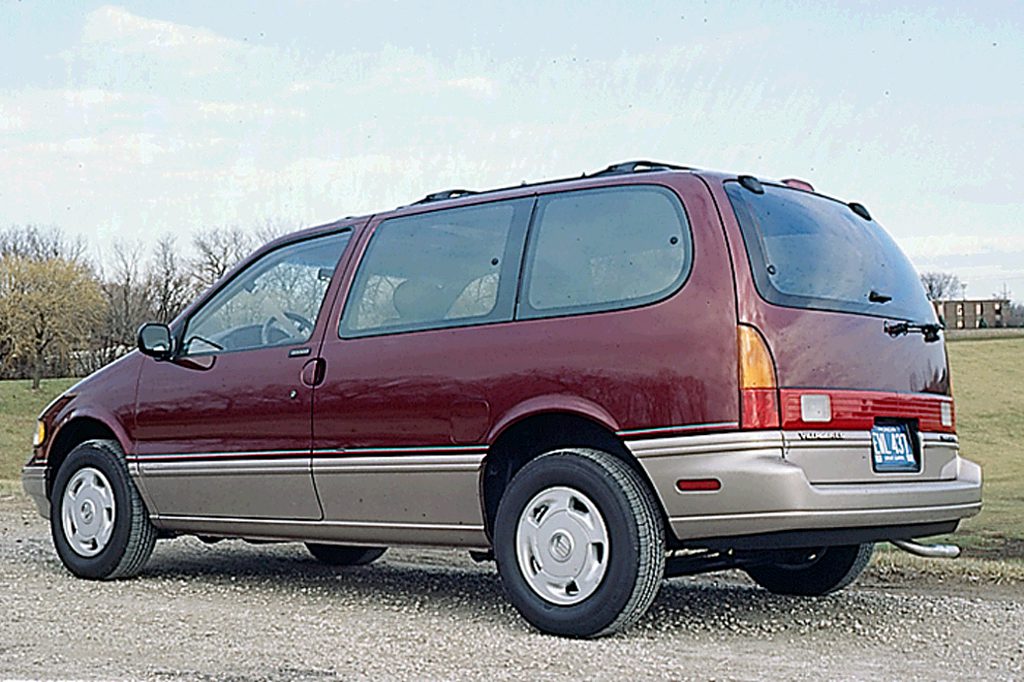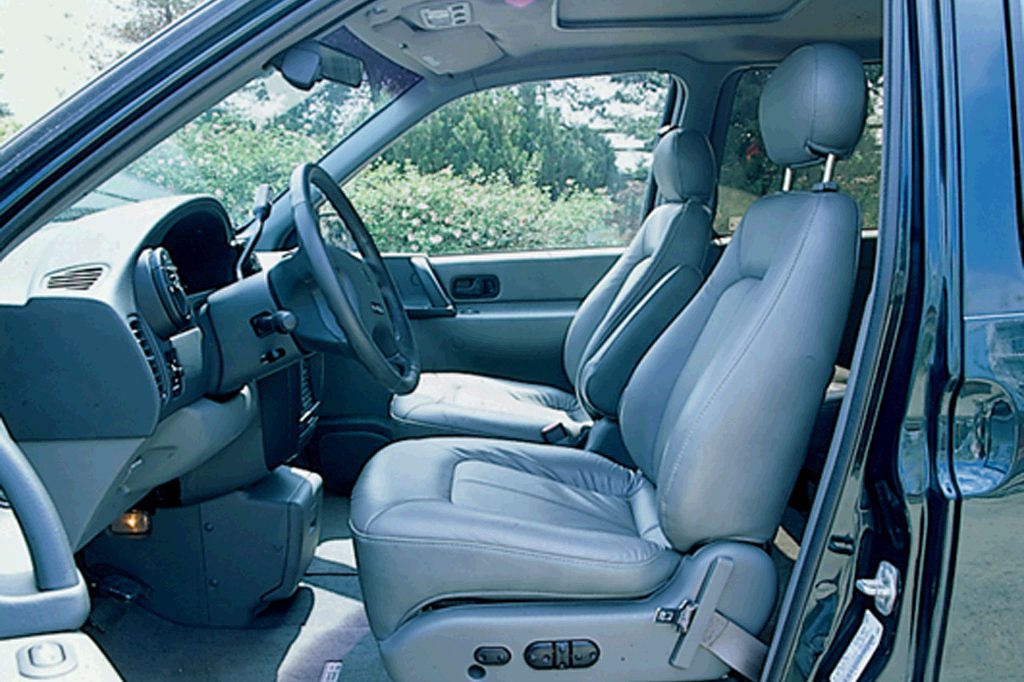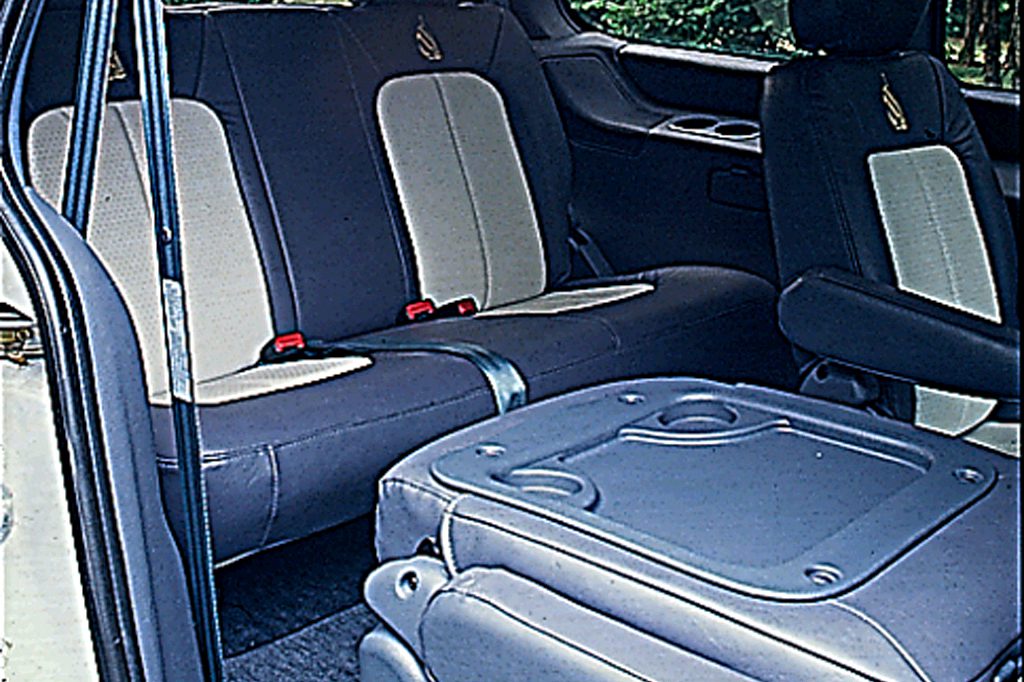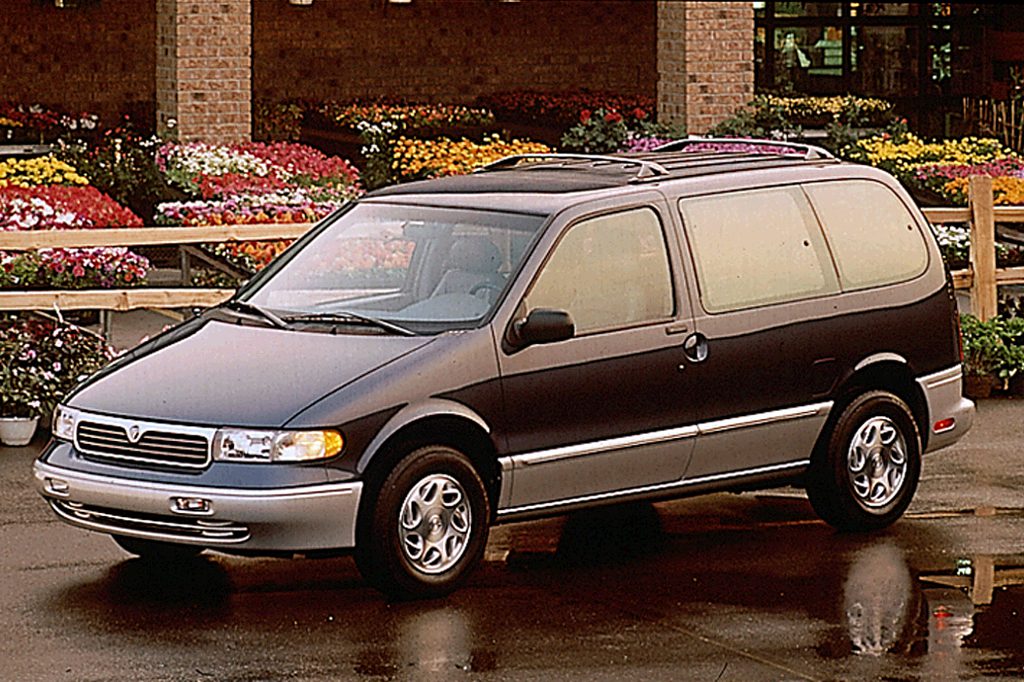| Minivan; Built in USA |
|
|
| Good condition price range: $1,100 – $2,400* |

1993 Mercury Villager Nautica

1995 Mercury Villager LS

1993 Mercury Villager LS interior

1994 Mercury Villager Nautica interior

1996 Mercury Villager
| Pros: |
|
| Cons: |
|
Compared with other minivans, the Villager has less interior room. It also lacks many of the standard features found on its rivals. Nevertheless it’s a good choice if you need more than a midsize station wagon but don’t require the interior space provided in one of the larger minivans.
Overview
In 1993 Mercury joined the ever-growing minivan market with an all-new front-drive model called Villager. Nearly identical to the also-new Nissan Quest, Villager was similar in wheelbase to the popular Dodge Caravan and Plymouth Voyager. Available in GS and LS trim, the Villager was propelled by a 151-horsepower, 3.0-liter Nissan V6, coupled to a 4-speed automatic transmission. Four-wheel antilock brakes were standard.
Yearly Updates
| 1994 Villager For its sophomore season, the Villager gets a new driver-side airbag and the luxurious Nautica Special Edition. It gets a distinctive blue-and-white 2-tone paint scheme, yellow pinstripe, white alloy wheels, four captain’s chairs with blue leather upholstery and white inserts, plus “Nautica” badging. |
| 1995 Villager The Villager enters 1995 with no significant changes. |
| 1996 Villager A revised dashboard held a passenger-side bag, and motorized shoulder belts are eliminated. The Villager also received a complete facelift, with new front and rear bumper fascias, side moldings, taillights and headlamps, plus a new chrome grille. The new dash and instrument panel feature easier access to all major controls and new audio systems that have larger buttons. |
| 1997 Villager Previously optional on the LS model and standard on premium Nautica models, captain’s chairs become an available option for the base GS model for 1997. |
| 1998 Villager No changes were made to Villager as Mercury readied an all-new model for ’99. |
